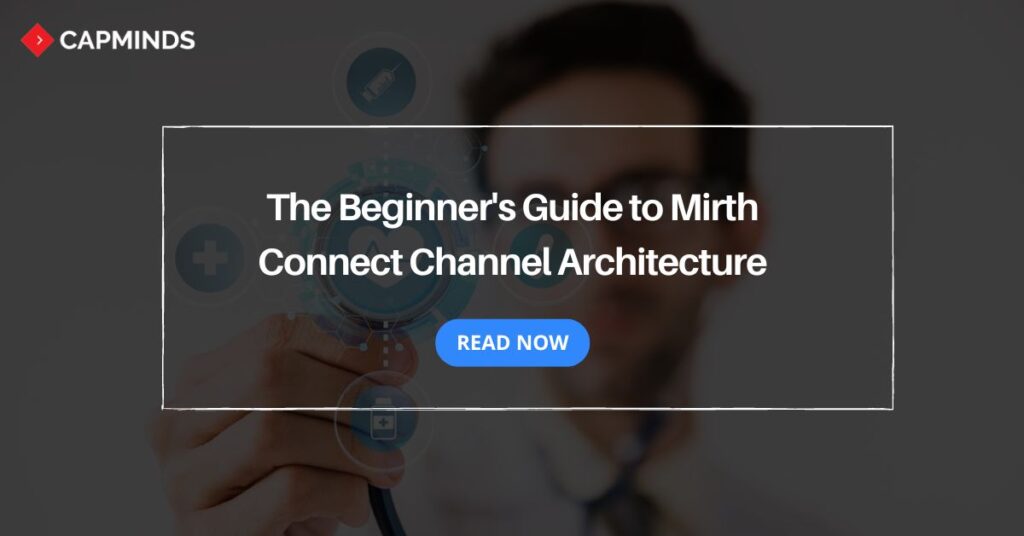The Beginner’s Guide to Mirth Connect Channel Architecture
Mirth Connect is a powerful integration engine that seamlessly integrates different healthcare systems. At its core lies the channel architecture – the backbone that organizes data flow.
Understanding this architecture is crucial for optimizing Mirth Connect’s performance and stability. This beginner’s guide shares the Mirth Connect channel architecture. If you are just getting started with Mirth Connect, this resource will help you.
What is Mirth Connect?
Mirth Connect is a powerful interface engine that helps different healthcare systems connect and share data seamlessly. It acts as a bridge, connecting various healthcare applications and equipment used in hospitals, clinics, and other healthcare facilities. What Mirth Connect can do:
- Translate one data format to another
- Transfer patient medical records securely between systems
- Support widely used healthcare data standards like HL7
Using Mirth Connect, healthcare providers often have many benefits. Here is how the Mirth Connect tool makes it easier for healthcare providers to:
- Access to medical records for all practitioners, so that they can coordinate for patient care.
- Eliminate the need for data entry and reduce prone to errors, improve workflow efficiency.
- Integrate new healthcare systems and applications into existing ones.
Mirth Connect offers a user-friendly interface, allowing healthcare IT teams to configure and manage data flows according to specific needs.
Related: How Mirth Connect Multi-Threading Empowers Healthcare’s Data Demands
The Role of Mirth Connect In Health Interoperability
At its core, Mirth Connect acts as a translator between different “languages” used by healthcare systems.
- Mirth Connect bridges the gap between electronic health records, lab systems, radiology systems, pharmacy systems, and others – Allowing their data to be exchanged.
- Supports common healthcare data formats like HL7, DICOM, and XML, so that information flows seamlessly.
- It allows healthcare providers to customize exactly how and what data gets shared based on their needs.
- Extract, reformat, and route critical patient information to the right place in the right format.
- Monitors data exchange and provides alerts if anything occurs, helping to keep systems reliable.
Mirth Connect Channel Architecture
1. Data Flow Management
- Connectors:
- Source Connectors: Listen for incoming messages from various sources like HTTP, databases, and files using supported protocols.
- Destination connectors: Route processed messages to external systems using appropriate protocols.
- Message Processing:
- Filtering: Apply the rule to process messages based on specific criteria conditionally.
- Transformation: Modify message structure or content using built-in functions or custom transformers.
- Scripting: Extend functionality through user-defined javascript or other script.
- Code templates: Leverage a centralized library of reusable script components.
2. Message Lifecycle
- Inbound Processing: Establish rules for receiving, validating, and preparing incoming messages.
- Core Processing: Apply business logic to filter, transform, and route messages as needed.
- Outbound Processing: Perform final actions on messages before sending them to their destinations.
- Error Handling: Implement mechanisms to capture, log, and address errors during processing.
3. Deployment and Scalability
- Channel Configuration: Define settings to customize individual channel behavior and properties.
- Channel Dependencies: Manage relationships between channels that rely on each other’s output.
- Channel Groups: Organize related channels logically for easier management.
- Load Balancing: Distribute message processing load efficiently across multiple Mirth Connect servers.
4. Monitoring and Management
- Channel Statistics: Gain real-time and historical insights into message throughput, errors, and other metrics.
- Channel Logs: Access detailed logs of channel activities for troubleshooting and auditing purposes.
- Global Scripts: Implement server-wide scripts to extend functionality across all channels.
- Code Template Library: Maintain a central repository of reusable script functions for efficient development.
5. Security and Access Control
- User Authentication: Enforce secure user logins with granular access controls.
- Channel Permissions: Define permissions to restrict user access and actions on specific channels.
- Data Encryption: Protect sensitive data within messages and configurations through encryption.
- Audit Logging: Maintain detailed logs of user activities for comprehensive security audits.
Related: Mirth Connect & FHIR: How MirthConnect Supports the Latest Health Data Standards
CapMinds Health Data Exchange Solution
Though Mirth Connect is a comprehensive software that makes it easier for interoperability between health systems, without proper experience, it’ll make it difficult.
If you are searching for the best Healthcare Data Exchange Solution, CapMinds Solution is the one you can rely on. CapMinds empowers healthcare organizations to adopt the Mirth Connect Technology and assist practices in Health Data Exchange.
Why choose CapMinds Health Data Exchange Solution?
- CapMinds Technical Experts are professionals who will assist you in navigating all the potential Mirth Connect Health Data Exchange challenges.
- Our technical team will properly analyze the healthcare practice workflow to configure Mirth Connect accordingly to map and transform health data between systems.
- We customize the Mirth Connect Implementation based on each healthcare practice’s requirements and environment.
- Our Mirth Connect Solution helps practices improve workflow efficiency, increase data accuracy, reduce manual time-consuming tasks, and boost productivity.
- We offer very competitive pricing and our solutions deliver strong ROI by integration costs and manual errors, benefiting healthcare practices at all levels.
Reach out to CapMinds Solution for the Best Health Interoperability Solution for your practice.




